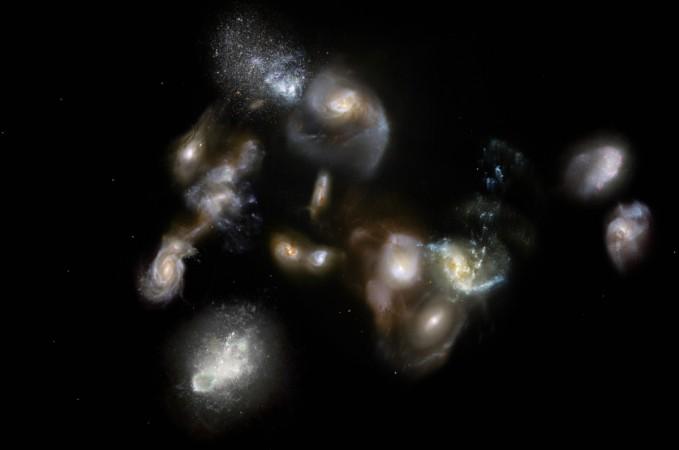
Galaxy clusters - the largest celestial features in the universe have been observed as they merge for the first time ever. These observations were made by the Atacama Large Millimeter/submillimeter Array (ALMA) and the Atacama Pathfinder Experiment (APEX).
One of the standout features of this observation is that astronomers are looking back in time when they are seeing these clusters form. This cluster that they were able to observe happened when the universe was one-tenth its current age, reports the ALMA observatory. That means this cluster began to form by galaxies merging into each other when the entire universe was less than 2 billion years old. The universe is about 13.8 billion years old.
Researchers of a multi-national team saw a dense group of galaxies that were so close that they will have combined into what is probably the largest structure in the universe. It is not clear at this time if this particular cluster is the largest ever observed.
To see this event, observations had to made by peering about 90 percent of the way across the entire observable universe, notes the report. Led by Tim Miller from Dalhousie University in Canada, this team of astronomers named the cluster SPT2349-56. The light from this cluster started traveling through the universe when it was only one-tenth its current age, so looking at it from Earth is literally looking back through time.
This region is dense and the star-birthing activity is so active that they are known as starburst galaxies. This one, in particular, is among the most active region ever observed in the young universe, says the report. Starburst galaxies give birth to thousands of stars every year, compared to the one star that is born per year in the Milky Way.














